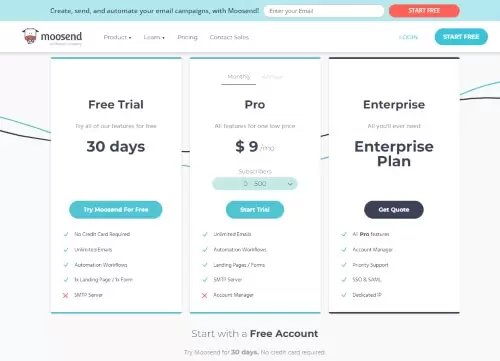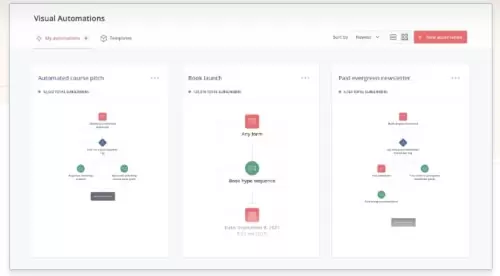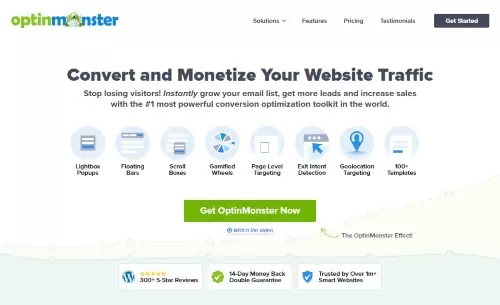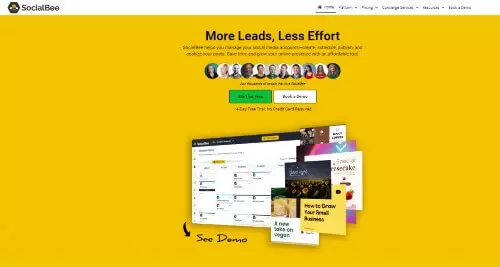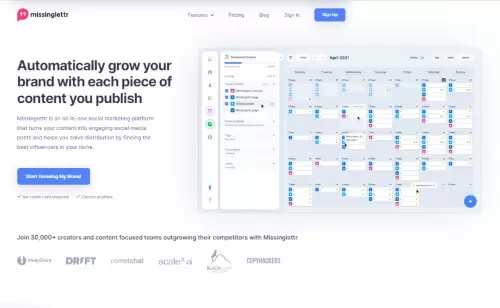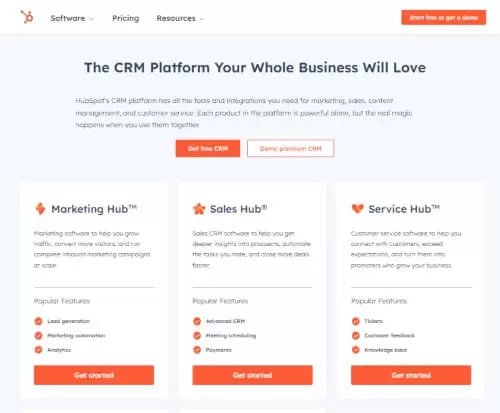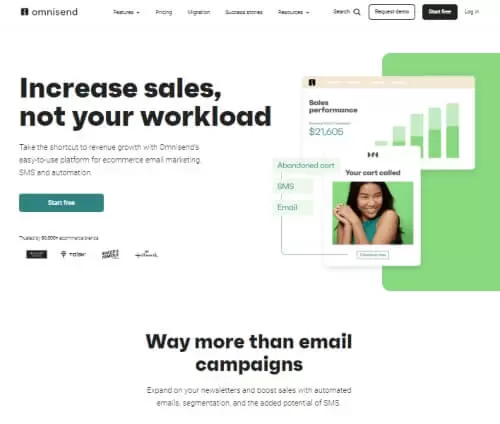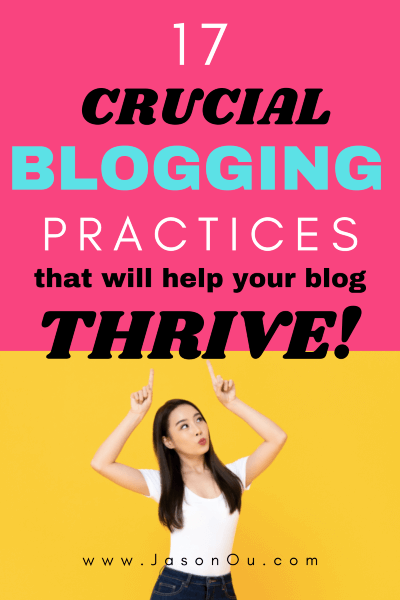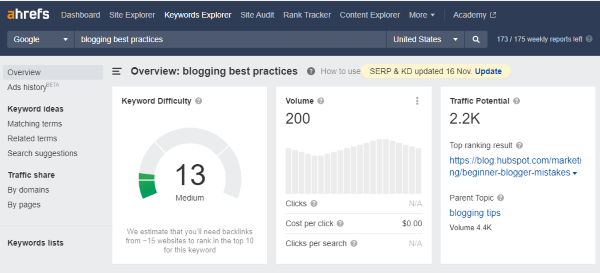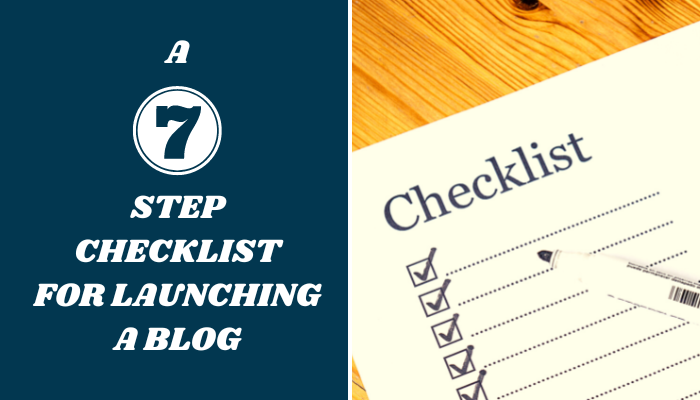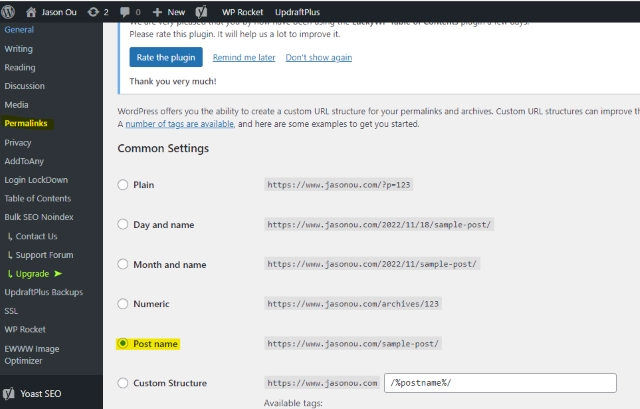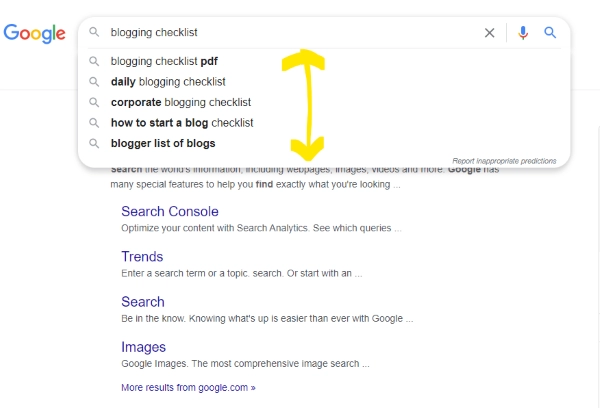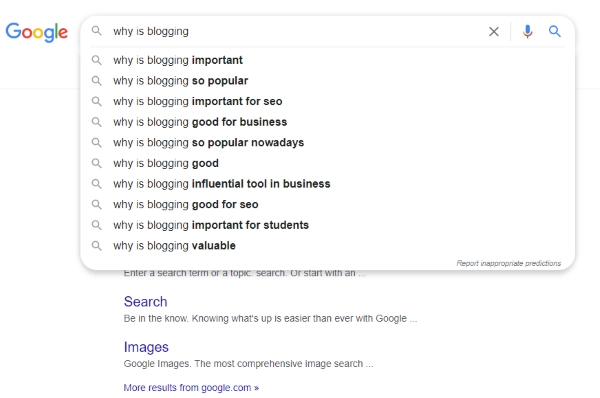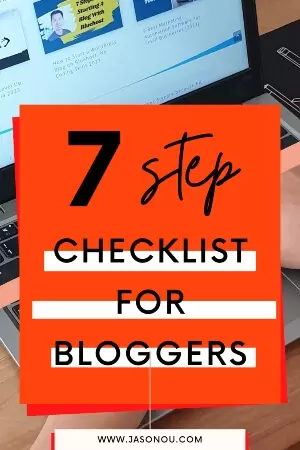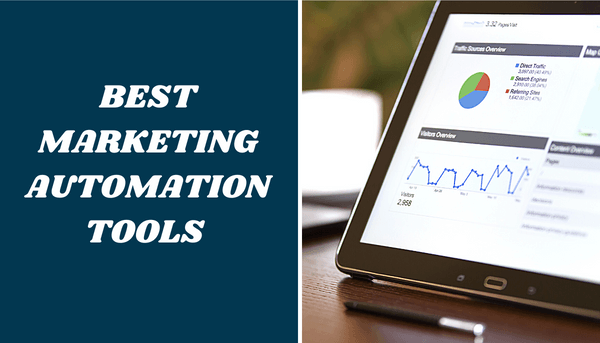
9 Best Marketing Automation Software For Small Businesses 2025
Are you a small business or blogger looking to level up your business? If so, choosing the best marketing automation tools for small businesses can help streamline your marketing efforts while saving time and money.
In this blog, I will outline 9 top marketing automation software for small businesses and every budget, along with my top 3 picks.
Best for Email Marketing
Moosend is an easy-to-use email marketing automation software that has a visual campaign builder built for nuturing customer relationships.
Best for Social Media
SocialBee is a social media management tool that helps you focus on content, while scheduling posts and analyzing your performance.
Best for CRM Sales
HubSpot is a sales and marketing software that enables you to get an overview of your sales pipeline, follow up with leads, and track email opens.
This page have some affiliate links. In other words, if you buy from my links, I may get a commission.
There you have it. My top 3 picks for the best marketing automation for small businesses. Now, let’s dive into the rest. But first.
Why Do Small Businesses Need Marketing Automation Software?
Here’s why. A quality small business marketing automation can help save time and money.
It carries out marketing tasks like sending emails, managing content marketing and social media, and tracking sales (CRM).
This helps to lighten up the load off marketing activities without having to do it all yourself. You can get more done in less time and focus on other tasks.
Put it simply. You can create an automated email series to nurture leads, set up a smart chatbot for your website, or even establish a sales CRM that organizes every lead efficiently.
By automating those boring, repetitious tasks you can reclaim countless hours of valuable time!
With the right tools and software that offers automation features, you can easily automate your marketing strategy to increase efficiency.
And let’s face it. Automation allows for improved workflows and better performance.
It can help build your blog from the ground up, creating new leads and fostering trust with customers while elevating your company to the next stage.
This in turn helps maximize efficiency.
The best marketing automation tools for small businesses will help you with email marketing automation, content marketing automation, social media marketing automation, and sales automation (CRM).
With that said.
So let’s dive into the best marketing automation software for small businesses.
Best Marketing Automation Tools For Small Businesses

To save you the hassle and stress of scouring for the best marketing automation tools, we have compiled them into various categories so you can make an informed decision on the best marketing automation for small business.
- Email marketing automation: This helps you create emails quickly so you can send them out to more people and follow up.
- Social media marketing automation: This helps you schedule posts and create campaigns on platforms like Facebook, Twitter, and Instagram.
- Sales automation (CRM): This helps you manage customer relationships and sales processes more efficiently.
Email Marketing Automation Software
With email marketing automation tools, you can send out emails to your subscribers that are tailored to their interests, schedule email campaigns to go out at the right times, build relationships with customers through automated email sequences, track email performance analytics, and much more.
Having the right email marketing software in your arsenal will give you a distinct advantage when it comes to engaging customers and bringing in new business.
Plus, there are lots of affordable or even free solutions available.
So no matter what your budget is, there will be an email marketing automation tool that fits your needs!
1. Moosend.
Best Marketing Automation For Small Businesses – Email
MooSend is an excellent choice for small businesses, freelancers, and bloggers due to its many features.
It offers a variety of professionally designed templates that can be edited to suit your needs.
Plus, it has an impressive range of technologies that allow users to create and manage highly targeted campaigns.
What does Moosend do?
From easy quiz creation templates to comprehensive A/B testing capabilities, Moosend has everything you need to supercharge your emails.
But what I like most are the “Recipes” (templates) which you can use to automate messages via customer loyalty, customer engagement, and upsells.
This is essential as it allows you to segment email subscribers and trigger sequences when an action is taken.
Every feature is designed with the sole purpose of helping you understand the behaviors and preferences of your subscribers better, boosting engagement, and delivering more personalized content.
As a user, you gain access to visual tools for constructing emails and marketing automation workflows along with an array of tracking capabilities – from simple open rates to deeper analysis of user behavior.
All this functionality comes with intuitive navigation controls as well as real-time analytics, enabling you to quickly make informed decisions about future strategies for maximum returns on investment.
Again, Moosend has the best email marketing system for content creatros and entrepreneurs.
Pricing: Starting at $9 per month | 30-Day free trial period
2. ConvertKit.
Convertkit is an email marketing platform tailored specifically for bloggers, creators, and small businesses. It provides intuitive yet powerful tools to help you convert your readers into subscribers and customers.
You will find a few neat features designed to build relationships with your audience and grow your business.
What Does ConvertKit Do?
With ConvertKit, you can use it to capture new leads, design beautiful emails, create automated workflows, A/B email split testing, and track progress through analytics reports.
Convertkit also makes it easy to add opt-in forms on your website or blog posts which help attract more signups from new visitors or regulars.
And If you’re looking to send personalized, text-based emails, that look as if they were sent directly from Gmail, then look no further!
A big one. You can segment your subscribers and existing customers based on triggers like actions on your website and actions within the email.
This allows you to send different emails to each group of email subscribers
You can even resend emails to subscribers who may have missed your first email.
To ensure emails reach your subscribers’ inboxes, ConvertKit provides deliverability optimization services.
Pricing: Starting at $9 per month | Free Plan Available
3. Constant Contact.
Constant Contact is an easy-to-use email marketing service that’s perfect for small businesses.
It offers a comprehensive range of tools to help you create, send and track professional-looking emails that drive engagement.
With its drag-and-drop email builder, ready-made templates, automated sequences, and segmentation options, Constant Contact makes it easy to design engaging emails in minutes.
Plus, their knowledgeable customer support team is available via live chat, phone, or email to help you get the most out of their services.
What Does Constant Contact Do?
To ensure maximum engagement and success, Constant Contact offers powerful automation and segmentation options.
You can set up automated sequences to send emails to new subscribers or trigger messages based on what actions your contacts take – or don’t take.
For instance, when it detects non-responsive subscribers, it will resend emails automatically.
And using their segmenting and automation features, you can easily send the right message at the right time.
As well, this small business marketing automation software offers social media cross-posting to platforms Facebook, Instagram, Twitter, and/or LinkedIn.
A notable feature is the event management system, as it allows you to manage registrations, invitations, and tickets.
With all the features, Constant Contact makes it to our list of marketing automation software for small businesses.
Pricing: Starting at $9.99 per month| 30-Day Money Guarantee
4. OptinMonster.
This is one of the best marketing automation software for small businesses and bloggers because it is the perfect tool to increase engagement with visitors using effective opt-in forms on your websites.
What does OptinMonster do?
It offers an easy-to-use drag-and-drop builder for users with no coding knowledge, along with A/B testing capabilities to optimize campaigns.
You can even create customized opt-in forms that can be used anywhere on the website. You can use a lightbox, Exit-Intent, slide-in forms, welcome mats, coupon wheels, and other widgets.
As well, OptinMonster also comes packed with powerful features such as smart triggers and advanced targeting options that make it easier for small businesses and bloggers to target the right visitors.
And it also supports various integrations like WordPress, Shopify, and top email marketing services which makes it easy to set up optins quickly across multiple platforms.
In addition, OptinMonster’s conversion analytics enables businesses and bloggers to make well-informed decisions through real-time data analysis, which helps you optimize campaigns more effectively.
Pricing: Pricing starts at $9 per month | 14-Day money back guarantee
Want more email marketing automation software to consider? Here’s another rundown of the best email marketing platforms.
Social Media Marketing Automation Software For Small Businesses
Social media marketing tools can make social media campaigns much more efficient and successful.
They help to keep track of the performance of social media posts with insightful analytics and metrics, allowing marketers to make more informed decisions on social media strategy.
Automation tools also make it easier to manage multiple social media channels simultaneously – this saves marketers time by avoiding jumping back and forth between social accounts while creating content.
These types of tools are cost-effective as well; providing a tremendous return on investment without having to invest in additional staff or software.
Making use of the best marketing automation software is an absolute must-have for small businesses.
1. SocialBee.
Best marketing automation for small businesses – Social Marketing
SocialBee is one of my top picks for the best automation software for small businesses.
It is a powerful social media automation and publishing tool designed to help busy small business owners and bloggers manage their time better.
It provides a range of features designed to help make managing social media content easier, from providing an effortless way to schedule and automate posts, to curating relevant content for your audience.
What does SocialBee do?
SocialBee makes it easy for users to plan, publish, schedule, and recycle evergreen content efficiently on various social media platforms.
(Meta, Twitter, Instagram, Pinterest, LinkedIn, Youtube, TikTok, Google Business Profile)
With SocialBee, you can make sure that your content is always up-to-date and timely. You have the option to schedule time-sensitive content to be posted, expired, and have it automatically removed from your calendar!
Looking for hashtag ideas?
SocialBee allows you to easily find relevant hashtags based on your content, and even create collections that can be added to your posts with a single click.
As well, SocialBee also offers valuable insights into user stats that give real-time feedback on the performance of posts so you can keep an eye out for what works best for your audiences and optimize your content strategy.
SocialBee is one of the must-have digital marketing automation tools.
Pricing: Starting $19 per month | 14-Day free trial period
2. MissingLettr.
Missinglettr is a comprehensive social media marketing platform that will take your content and transform it into captivating posts, as well as assist you in locating the top influencers in your industry so you can get maximum reach.
What does MissingLettr do?
Let’s start with the automated drip campaign builder.
This powerful tool will automatically locate your posts across various social media platforms and store them in a library for scheduled posting.
This allows you to promote massive amounts of content on autopilot and keep a steady stream of posts engaging their audience.
With Missinglettr, you can easily keep your audience engaged with no shortage of content ideas. It automatically curates the most popular and relevant material to share with them!
Furthermore, you can make the most of your content by taking advantage of the Automatic Repost feature; it will locate and republish your highest-performing posts at prime times.
Beyond simply scheduling posts, it offers suggestions on the optimal time and channels for your brand to post to maximize success with your social media marketing strategy.
Another highlight. You can easily repurpose your content into beautiful emails, tweets, or posts across social media platforms, helping expand an article’s reach beyond the page.
That means, it can take one piece of content (like a blog post), turn it into multiple pieces of engaging content, and then share it across multiple platforms and timeframes, without any extra work involved.
You can share it across Meta, Instagram, LinkedIn, Google Business Profile, and Twitter.
MissingLettr can analyze your blog post and suggest the best pieces of content to repurpose, helping you to get the most out of each piece of content, every time.
As well, MissingLettr’s library of powerful templates makes it simple to craft stunning art pieces, while also tracking the performance of each post-promotion so you can keep up with what’s working and optimize as you go.
Ultimately MissingLettr is designed to make it easy for small businesses and bloggers to curate smarter campaigns with less effort every time.
Pricing: Starting at $9 per month
CRM Marketing Automation Software For Small Businesses
Looking to close more sales? Here are some small business marketing automation tools that can help you keep track of the minor details so you can convert more leads into customers.
1. HubSpot.
Best marketing automation for small business – CRM.
HubSpot is the best CRM and marketing automation for small businesses.
It provides all the essential features to efficiently nurture leads, manage the customer journey, host blog content, and measure success.
What does HubSpot do?
HubSpot is home to automated workflows, advanced analytics, mobile optimization, and over 1,200 integrated popular applications (RingCentral, Zoom, etc) that can be managed centrally with access control.
That means you can schedule automated emails, live chat, and many more. It also allows you to set up chatbots to automate live chat marketing.
Now that’s powerful.
Even better, you can segment contacts based on certain goals from deals won or lost, time allocations, appointments, and so on.
To take it a step further.
You can personalize content according to a user’s device type, list segmentation, and even geographic region – creating an experience that is tailored just for them.
More importantly, HubSpot helps businesses create content tailored toward specific audience profiles while also optimizing websites to maximize their effectiveness.
This enables you to save time and increase sales through easy-to-understand reporting as well as automated workflows such as promotions and deals.
Also included is task management. By using this feature, you can accurately track who is assigned to what task, and when it needs to be completed and receive regular updates on the progress.
Side note – You can leverage HubSpot’s payment feature to accept payments and donations right on your website! Not only will this boost conversion and revenue but it also eliminates the need for complex integration processes.
In short, Hubspot empowers small and big businesses to take their marketing efforts to the next level!
Which makes it one of the best marketing automation tools for small businesses.
Pricing: Starting at $45 per month | Free Plan Available
2. Omnisend.
Omnisend is another pick for one of the best CRM email marketing automation for small businesses and bloggers.
Omnisend combines email marketing, push notifications, SMS, WhatsApp, social media automation, and more, into one easy-to-use platform.
What does Omnisend do?
Omnisend provides a dynamic platform that includes customized opt-ins, landing pages, pop-ups, autoresponders, and the ability to send targeted campaigns by leverage segmented lists – giving marketers, like you, access to powerful features such as A/B testing for their email campaigns.
Its simple yet powerful drag-and-drop editor makes it easier than ever to create beautiful email campaigns which can help save time and maximize your sales potential.
Omnisend also has integrations with various eCommerce platforms so that you can sync customer insights – including contact info and order details – across all your channels.
As mentioned earlier, Omnisend enables you to send targeted messages across different platforms and devices, helping ensure that your visitors receive the most relevant content.
By comprehending the browsing behavior and device preferences of users through custom events you create, they are able to do this.
As an example, you can follow user activity on your website and in welcome emails, abandoned cart emails, and post-purchase automation series to categorize (segment) messages more accurately.
Seriously. Omnisend’s comprehensive data tracking tools will provide you with valuable insights into your customer’s behavior. Allowing you to improve customer engagement with personalized messages.
With Omnisend’s help, small businesses and bloggers can spend less time on tedious tasks like database management or marketing materials curation each month and instead focus on creating engaging content that will attract customers.
Pricing: Starting at $16 per month | Free Plan Available
3. PipeDrive.
Pipedrive is a great customer relationship management (CRM) platform for small businesses and bloggers looking to turn more leads into sales.
Pipedrive is an easy-to-use software with plenty of features that can help you market, sell, and manage relationships with customers.
What does Pipedrive do?
It has an intuitive drag-and-drop pipeline builder that enables users to see each step of their sales cycle as it progresses.
Also, it offers a host of features such as tracking leads and sales, automating workflows and tasks, creating shared documents, monitoring progress, contact and lead management, calendar synchronization, and pipeline visualization.
Which helps to streamline every step of the process from prospecting to delivery.
This makes Pipedrive not just an amazing tool for managing client relationships but also a fantastic way to get organized.
Another nice thing about Pipedrive.
It provides an opportunity to monitor competition, with its market analytics tools being incredibly useful for gauging the success of your business to rival businesses.
Plus, it has an intuitive user interface, allowing for ease of use among novice users who may not have previous experience with similar platforms
Pipedrive also offers automated communication reminders and powerful analytics and metrics so you can always stay on top of how your business is doing.
With Pipedrive’s clear visuals, data insights, and dynamic deals system, entrepreneurs can maximize their results in no time!
Pricing: Starting at $14.90 per month | 14-Day free trial plan
Summary – Best Small Business Marketing Automation
I hope this article has helped clear up any questions you may have about the best marketing automation software for small businesses and bloggers.
And yes. I’ll be adding more marketing automation software as it comes to light. So look out for future post updates.
Again, here’s a quick summary of the best marketing automation tools for small businesses in 2025.
- Email marketing automation: Moosend, ConvertKit, Constant Contact, OptinMonster.
- Social media marketing automation: SocialBee, MissingLettr.
- Sales automation (CRM): Hubspot, Omnisend, Pipedrive.
While you’re here, check out these articles on the best email marketing services for small businesses and the best CRM with email marketing integration.
You Might Want to Check This Out Too
Still Unsure If A Blog Is Worth Your Time And Effort? – Here Are Proven Reasons Why You Should Start A Blog Now!
Disclosure: This post may contain affiliate links, which means I’ll receive a commission if you purchase through my links, at no extra cost to you. Please read full disclosure for more information.
Resources To Grow Your Business With
Bluehost is a great starting point for beginners or bloggers who want to switch to a reliable web hosting service. And it gives you the best bang for your buck – starting at $2.95 a month*.
With the entry-level hosting plan, you’ll get a free domain name for one year, free SSL, free CDN, reliable customer support, and 30 day money back guarantee.
You can sign up with Bluehost here.
WPX Hosting
It’s a web-hosting service I love using. It specializes in WordPress hosting, and depending on what package you opt for, you can host 5 or more sites on one account. The best bit is – the quick turnaround in support is top notch.
For bloggers who have an established blog, this is a fantastic option.
You can learn more about this service here.
Aweber
Building an email list of a growing audience is essential for the longevity of any business. This autoresponder service is easy to use, and it is a great starting point for someone looking to kickstart their email campaign. You can try their free account here.

Hi, I’m Jason Ou (surname aka, Oh). I am a Solopreneur and Blogger. My mission is to help fellow entrepreneurs (like you) to profit from their passion online. Let’s connect on Facebook now.

